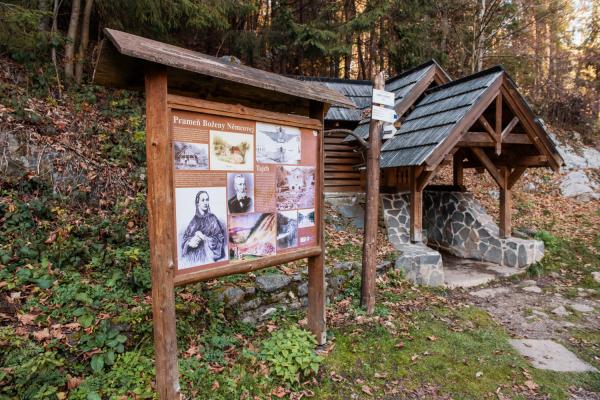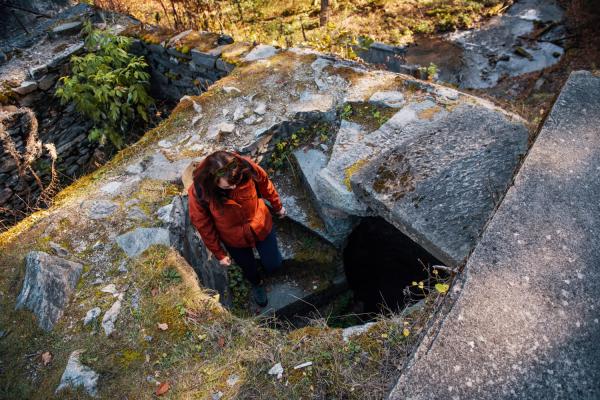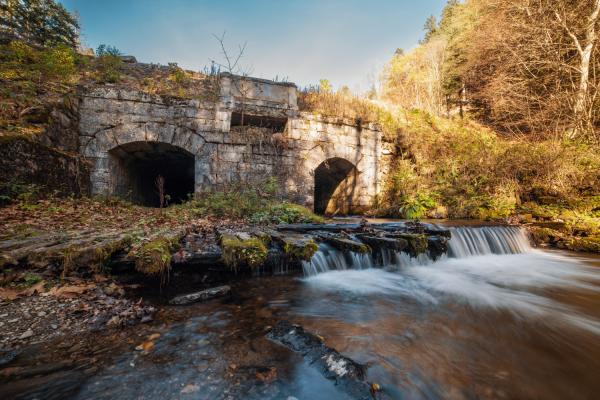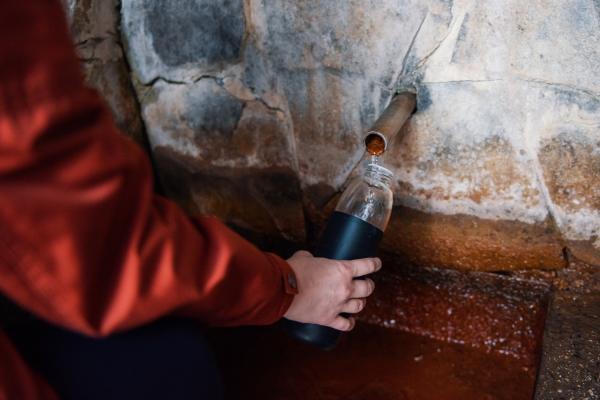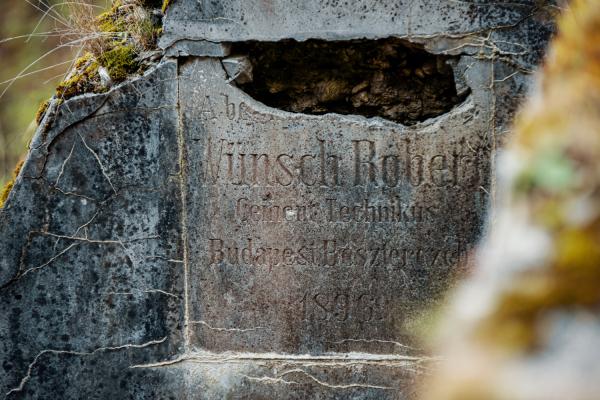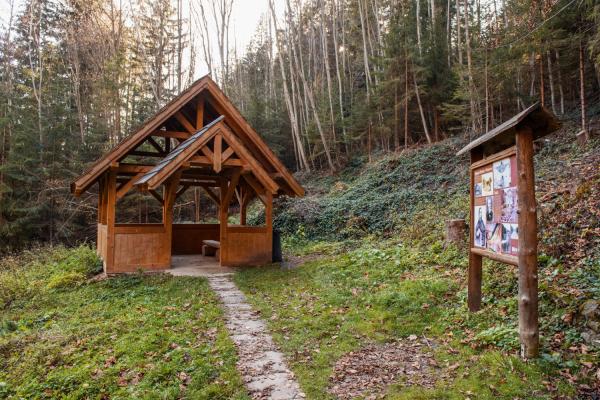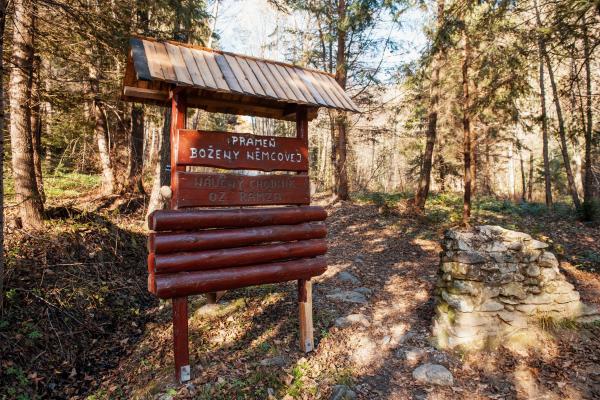
“Bacúšsky” Tajch and the Spring of Czech writer Božena Němcová
Božena Němcová Spring
When wandering around the Polomka village, the oldest village in the region, Bacúch, is definitely worth visiting. Its forests hide the ruins of a formerly important Tajch and a unique spring. Its effects were experienced and described by a Czech writer, Božena Němcová.
The mineral spring is located in the Bacusska valley, on the blue hiking trail, approximately a kilometre to the north of the village. Your walk will first take you to a gamekeeper's lodge, which is a good landmark. Water spring discovered by mining councillor, Bergráth Herder, in 1813, springs to the surface just behind it.
The spring water originally served only to quench thirst. Time went by and local people discovered its beneficial effects, mainly reflected in the harmonized internal environment of the human body. The spring water is cold, scale-forming, moderately mineralized, with a higher content of boric acid. It contains a higher level of iron, with a slightly sour to earthy taste. All these factors contribute to its healing effects and small spa was built at the spring as soon as in the mid-19th century. They were extensively used to heal or take rest.
The Czech writer, Božena Němcová, was an important historic figure who visited the spa. She described her experiences from the spa in her appealing book called Mountain cottage (“Chyže pod horama” in Czech). To honour the writer, the spring was named “Spring Božena Němcová” in 1962 to commemorate the 100th anniversary of the birth of Mrs. Němcová. There is pavilion right next to the spring.
"Bacúšsky" tajch
As you walk from the water spring further along the trail, you will reach a former Tajch. It used to be an important water structure back in the past, but it gradually decayed, with mere remnants of its original splendour preserved until today.
The main function of the lake-like Tajch was to increase the flow rate when timber was transported by the river, closely related to the development of modern forestry. The Tajch also increased the revenues obtained from rich local forests, because the water helped transport huge quantities of construction material that otherwise could not have been handled. The construction was carried out between 1881 and 1886. The dam was almost ten meters high, and filled within two or three days according to the abundant “Bacúš” brook that flows through the valley. Once the Tajch was completed, Bacúch became the largest site with wooden rafts in the region of upper Hron river.
GPS: 48.87325035177873, 19.806438057044353

